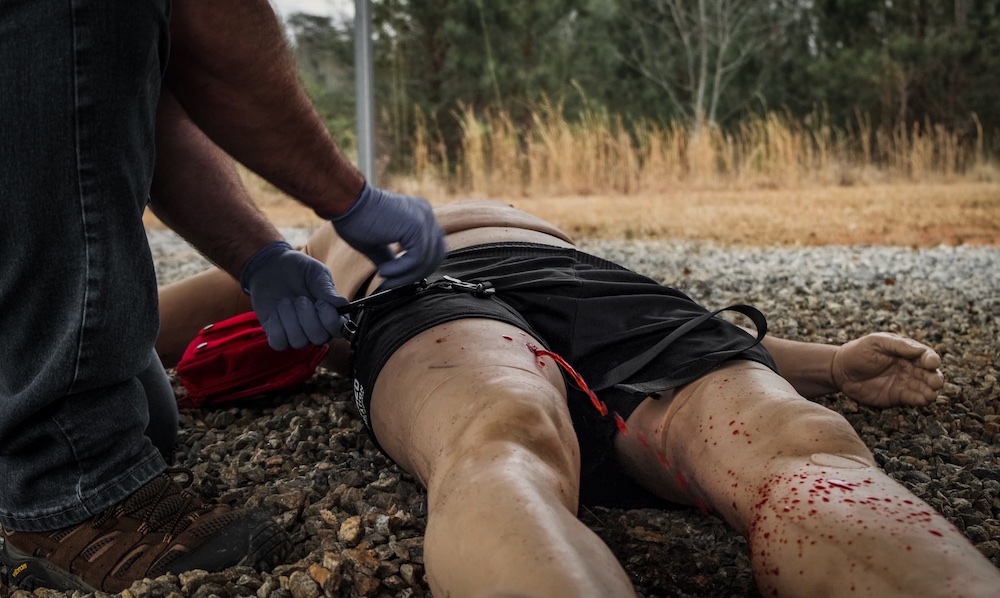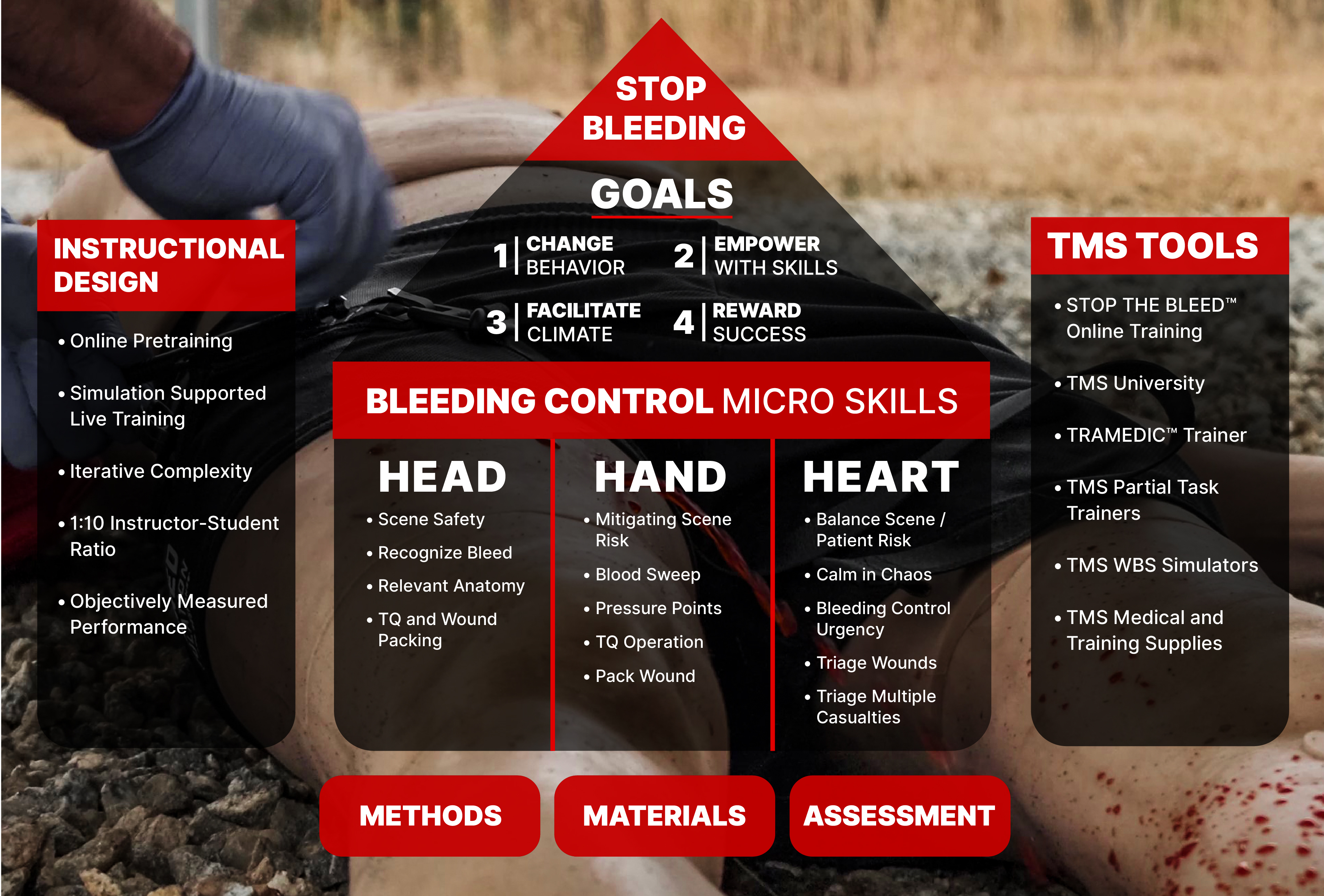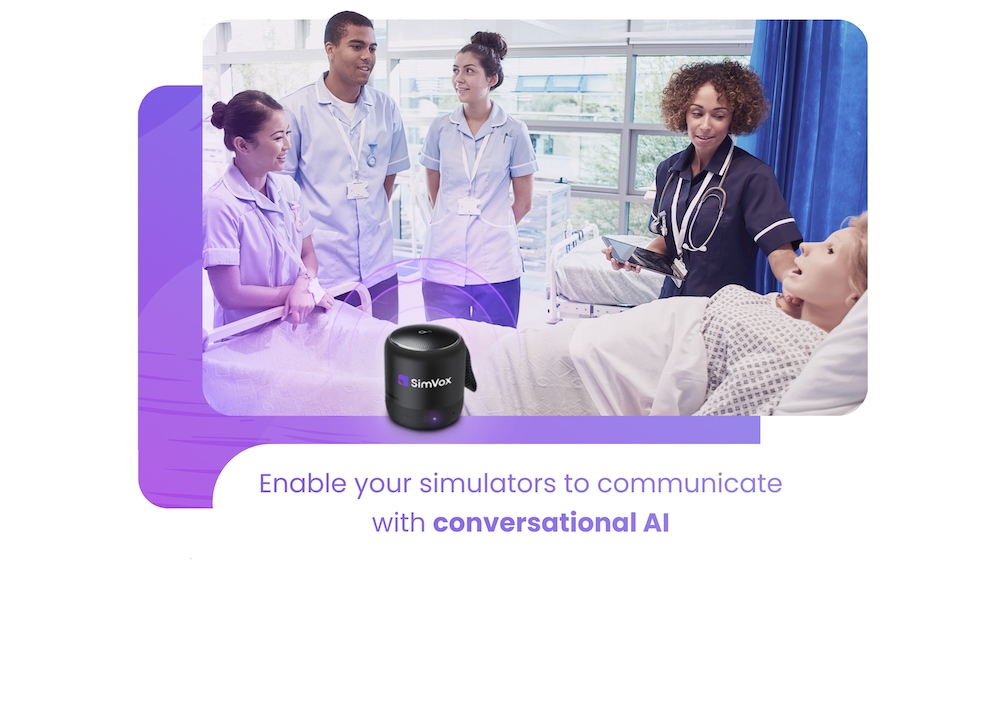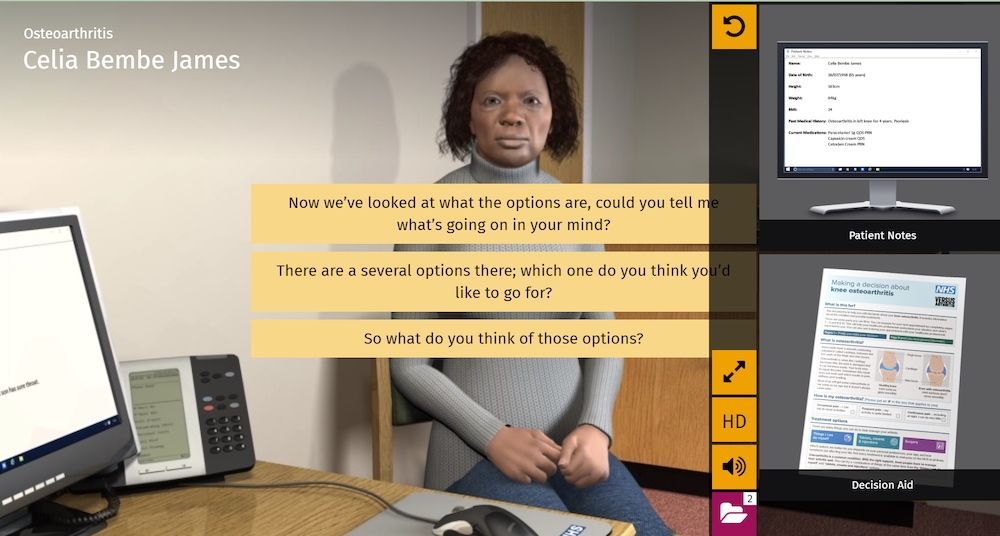Tactical Medical Solutions (TMS) created the company’s first tourniquet and has been teaching the life-saving skill of bleeding control since that time using healthcare simulation. Like CPR and AED use, learning how to stop bleeding is a critical skill that is easy to learn, especially when supported by the right curriculum, equipment, and clinical simulation. As preparedness is often something taken for granted, Tactical Medical Solutions (TacMed Solutions) recently began teaching bleeding control courses at trade shows and conferences the company attends. Today, Dan Irizarry, MD, Senior Medical Advisor at TacMed Solutions, shares some tips the company has learned that may improve bleeding control training.
Highly effective bleeding control training starts with a well-designed curriculum. Thinking that good content, like interactive online pre-training or a cool simulator, is a great curriculum may be tempting. Certainly, the right tools within a curriculum can make learning easier, but the curriculum is much more than its tools. The curriculum has been defined as “a standards-based sequence of planned experiences where students practice and achieve proficiency in content and applied learning skills. The curriculum must include the necessary goals, methods, materials, and assessments to effectively support instruction and learning.” TMS Simulation uses this curriculum definition to create quality training.
TMS uses the Kirkpatrick model, employed by many disciplines to guide and assess curricula, with the goal of changing a learner’s behavior from helplessness to action when faced with serious bleeding. TMS training seeks to empower learners to act with calm confidence and skill. The curriculum ensures learners are skilled and creates an educational climate that allows for failure until success is achieved. Finally, performance is validated with objective data captured by TMS simulators and rewards success with positive feedback.
TMS bleeding control training uses two concepts, micro-skills, and repetition, to achieve learning outcomes (Kappy et al). describe micro-skills as “specific and isolated actions that can be observed and repeatedly practiced.” To simplify and organize the process, we divide critical micro skills into three categories: head skills, hand skills, and heart or attitudinal skills.
Head Skills: Foundational knowledge needed for successful intervention.
- Assess environmental safety to determine if intervention is feasible.
- Recognize serious bleeding and differentiate it from non-serious bleeding.
- Understand relevant anatomy as it applies to successful bleeding control (pressure points, compressible and non-compressible bleeding).
- Conceptually understand tourniquet, wound packing, and bleeding physiology.
Hand skills: Haptic or hands-on knowledge is needed for successful intervention.
- Techniques to mitigate environmental risk (drags, carry, etc.)
- Finding bleeding using a blood sweep.
- Applying pressure to a pressure point.
- Putting a tourniquet into operation.
- Putting pressure dressing into operation and pressure pack a bleeding wound.
Heart skills: Attitudinal understanding that drives decisions and urgency.
- Balance environmental risk with patient risk.
- Maintaining calm in chaotic environments.
- Prioritize bleeding management in polytrauma casualties.
- Triaging multiple casualties.
TMS training repetitively reinforces the listed micro skills through a stair-step training method. Whenever possible, online resources are used to pre-train learners before coming to a training event. The American College of Surgeons Stop the Bleed online training course is an excellent source for this. The TMS University has detailed videos for wound packing and tourniquet application that can be easily incorporated into curriculums. The TMS Tramedic Point of Injury Video Instructions is designed to walk an untrained layperson through a point of injury evaluation and can be used for self-guided training.
At the live training event, TMS builds on pretraining by dividing learners into substations centered on haptic skills. The stair step model begins with partial task trainers like the Tourniquet Task Trainer Arm and the Packable Wound Trainer for initial tourniquet and wound packing skill development or uses class participants as “patients.” These tools are good for initial learning but do not give the realism or objective measurement that is critical to validating skills and developing confidence.
The next step is to graduate to the TMS whole-body simulator systems as partial task trainers. TMS whole body simulators divide into an upper and lower torso providing the students a simplified, more realistic training experience, simulator familiarization, and a chance to objectively measure initial learner bleeding control skills.
The next step is to elevate the experience to the whole-body system to create a complex polytrauma patient that breathes, bleeds, moves, speaks, and has appropriate physiology and objectively measures every element of performance.
For scenario development, TMS’s goal is to provide short, usually, less than 10 minutes, focused simulations to allow for repetition. TMS selects a simulator that represents the most likely scenario to be encountered. For example, our EMITT Active Shooter Simulator features a highly realistic multiple gunshot wound casualty optimal for law enforcement training. When a wider injury spectrum is needed, the use of a Whole body Hemo Pulses/Breathing or Whole body Clinical Response – Resuscitate simulator is used because the injury patterns are more consistent with a blast or blunt trauma mechanism of injury like a car accident.
Simulator realism and fidelity help foster the “calm in chaos” micro skill as uninitiated learners mitigate their emotional reaction to severe trauma. To increase the realism, the experience can be escalated to incorporate multiple simulators and designed scenarios for teamwork and triage as required. The goal of TMS is three simulations per hour with debriefing time that is twice the time of the simulation.
When conducting training, learners must also understand proper bleeding control tools and supplies. Standard TMS SOF-T tourniquets are used for training because there is no training version that operates the same as the real device and fidelity is important. TMS training versions for dressings and chest seals allow for significant cost savings while maintaining device realism. After training, the students are encouraged to procure bleeding control kits for their cars and homes, so they have the right tools if they need them.
Assessment is the final component of the TMS University curriculum. The AARs focus on the micro-skills and the thought process behind actions and decisions. Because TMS simulators automatically capture performance data, learners are provided objective feedback like time to stop bleeding and estimated blood loss in real-time and with each iteration to show improvement. This fosters student self-confidence and sometimes introduces a healthy level of competition.
Delivering or attending effective bleeding control training could be lifesaving. A well-planned curriculum supported with good content, equipment, and simulation helps elevate response to these challenging situations. TMS hopes you will join us at an upcoming conference where TMS-sponsored training is offered. TMS is here to support your training and first responder needs.
More About TacMed
Tactical Medical Solutions, formerly known as Trauma F/X, develops and manufactures customized emergency response technology, advanced healthcare simulation and training aids, and personal protective gear to effectively manage a spectrum of hostile environments and injuries. The TacMed team’s passion is to serve and protect the health of communities, both at home and abroad. From point of injury throughout the continuum of clinical care; warfighters, first responders, and citizens alike, all rely on extensive tactical field experience and product knowledge to supply intuitive solutions. TacMed’s commitment to this life-saving mission is only matched by the integrity of the company’s team, the durability of products, and renowned customer support services.
The company’s products reflect on experiences and situations TacMed professionals have faced and friends that have been lost. The goal is to prevent others from experiencing similar losses by offering equipment that allows them to operate more efficiently and effectively. The company believes that minimizing preventable death in a combat or tactical environment is a realistic and attainable goal.
All TacMed employees are former tactical medical professionals or have a close relationship with them. Staff maintains close ties with some of the most elite and experienced medics in the world, and all TacMed products must pass their evaluation before the company name is placed on them. TacMed understands the principles of human performance as they relate to combat stress and seeks to design products to complement that performance not complicate them. This approach to product development and evaluation leads to products that truly work in combat.
References
- Rouse DN. Employing Kirkpatrick’s evaluation framework to determine the effectiveness of health information management courses and programs. Perspect Health Inf Manag. 2011 Apr 1;8(Spring):1c. PMID: 21464860; PMCID: PMC3070232.
- https://www.ride.ri.gov/InstructionAssessment/Curriculum/CurriculumDefinition.aspx
- Kappy, B., Herrmann, L.E., Schumacher, D.J. et al. Building a doctor, one skill at a time: Rethinking clinical training through a new skills-based feedback modality. Perspect Med Educ 10, 304–311 (2021). https://doi.org/10.1007/s40037-021-00666-9
- Kirkpatrick D. and Kirkpatrick J. Evaluating Training Programs: The Four Levels. 3rd Edition. San Francisco: Berrett-Koehler; 2006.







